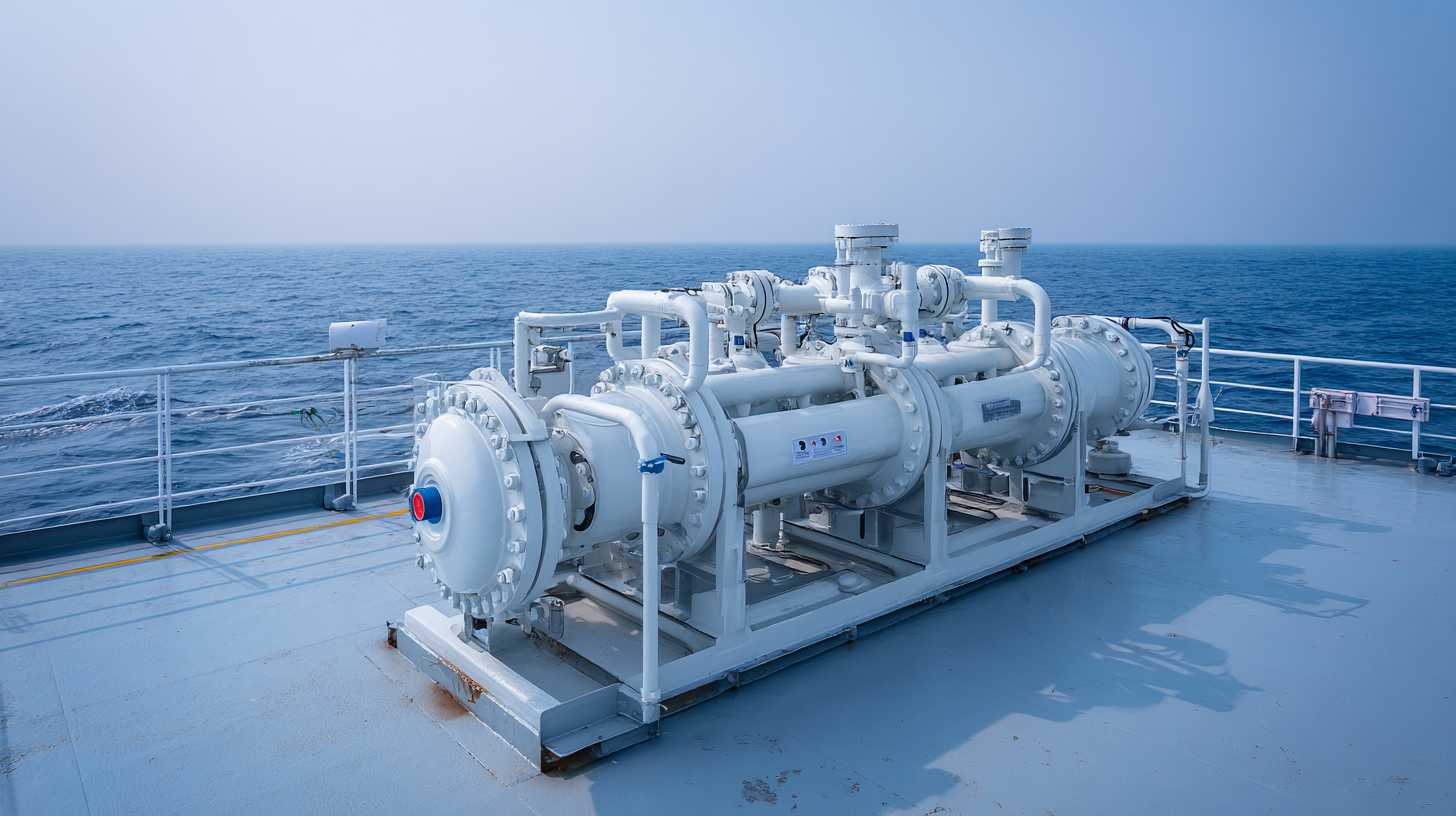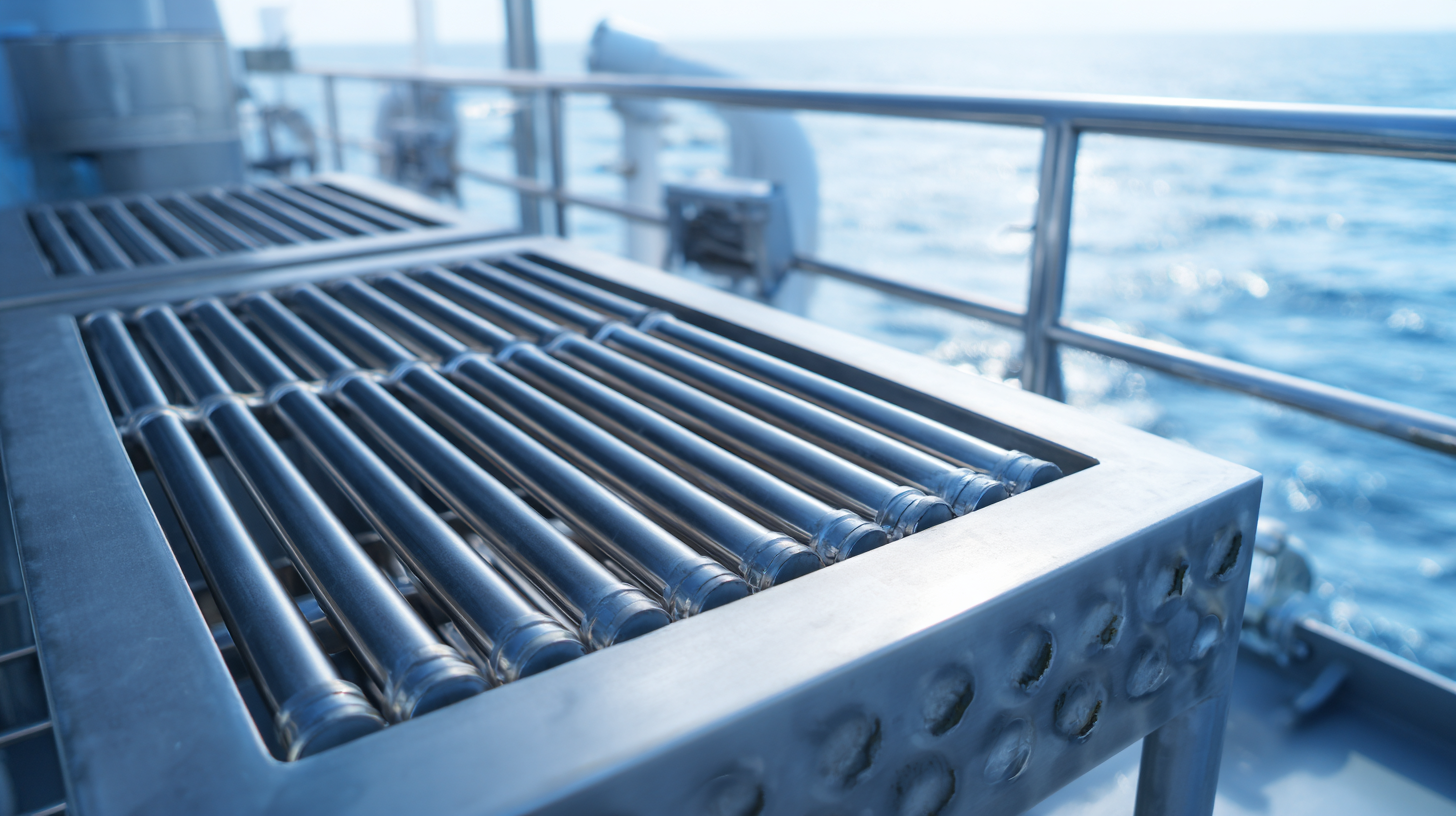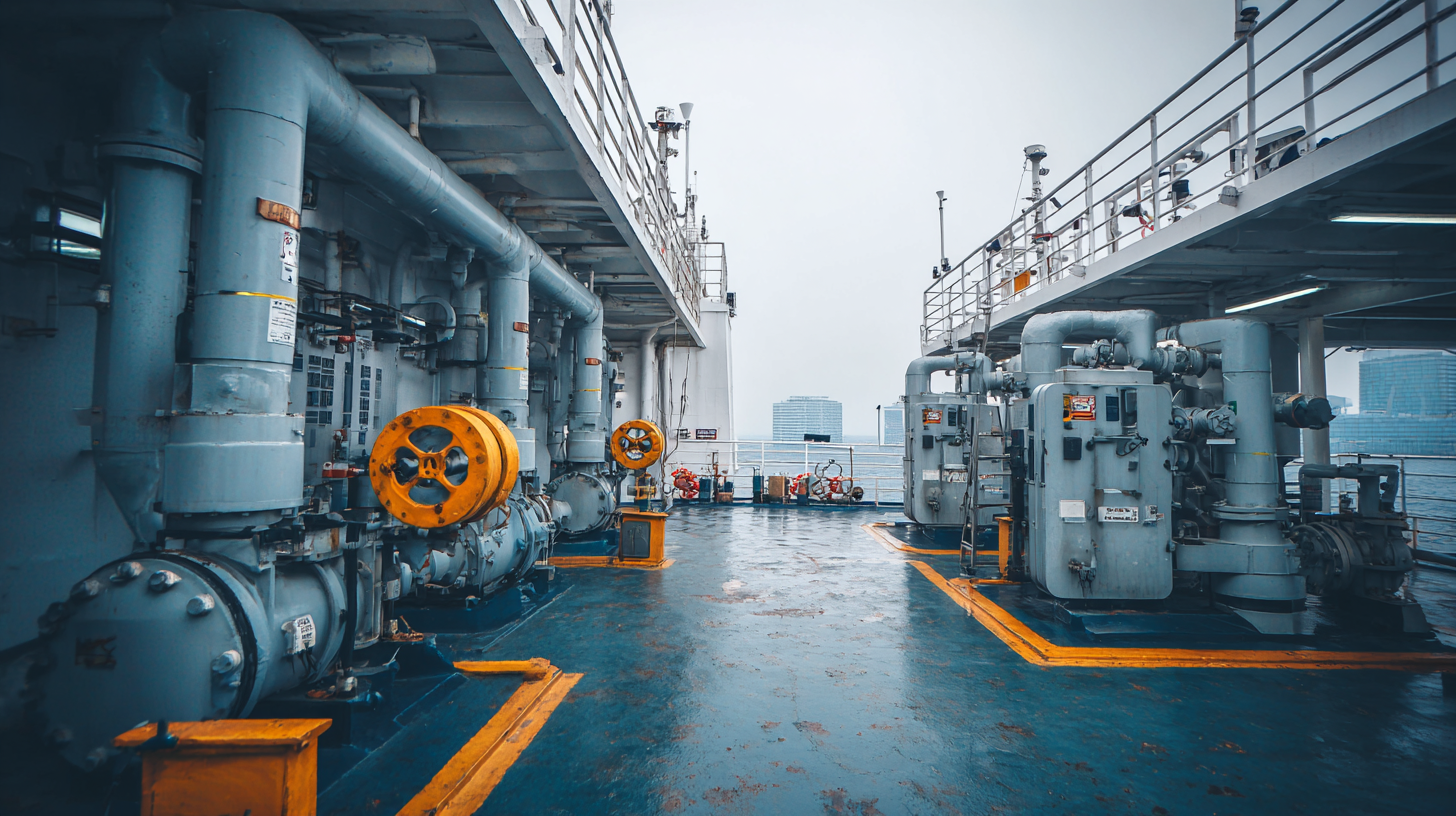Leave Your Message
When it comes to ensuring optimal performance and efficiency of vessels, selecting the right Marine Heat Exchanger is critical. According to a report by the International Maritime Organization, the marine industry is increasingly focusing on reducing emissions and improving energy efficiency, making the role of heat exchangers more significant than ever.
A well-chosen Marine Heat Exchanger can enhance your vessel's ability to manage thermal energy efficiently, ultimately contributing to lower operational costs and compliance with environmental regulations. Moreover, with the global marine heat exchanger market projected to grow at a CAGR of over 5% from 2021 to 2026, it is evident that this component is vital for both new builds and retrofits.

In this blog, we will guide you through the essential factors to consider when searching for high-quality suppliers and provide a comprehensive checklist to ensure that your selection meets your vessel’s specific needs.
Marine heat exchangers play a crucial role in enhancing the efficiency of vessels, ensuring optimal thermal management in various onboard systems. According to a report by Marine Insight, nearly 20% of a ship's fuel consumption can be attributed to inefficient cooling systems. This highlights the importance of selecting the right heat exchanger, as it directly affects engine performance and overall operational costs. Proper heat exchange can significantly reduce energy loss, resulting in lower emissions and better compliance with environmental regulations.
When choosing a marine heat exchanger, consider the specific requirements of your vessel’s engine and cooling systems. Look for models with high efficiency ratings and robust materials that withstand harsh marine environments. It's essential to evaluate the exchanger's capacity, ensuring it meets the thermal loads during peak operational conditions.
Tips:
Always consult with industry professionals to identify solutions tailored to your vessel's needs. Regular maintenance checks can prevent potential failures and ensure prolonged efficiency. Additionally, investing in advanced heat exchanger technologies can yield long-term savings and enhance vessel longevity.
When selecting a marine heat exchanger for your vessel, several key factors play a crucial role in ensuring optimal performance and efficiency. First and foremost, consider the type of fluid being used and the specific temperature ranges required for operation. Marine environments often expose equipment to corrosive conditions, making it essential to choose materials that can withstand seawater's harsh effects. Common materials include titanium and specialized stainless steels, which enhance durability and longevity.
Another important aspect is the size and capacity of the heat exchanger. It must be appropriately sized to handle the vessel's cooling requirements without creating excessive pressure drops. Additionally, integrating a variable speed drive can improve energy efficiency by adapting the cooling power based on real-time demands. This not only helps reduce operational costs but also contributes to a more sustainable and eco-friendly operation. Overall, taking these factors into account will lead to a more effective selection of a marine heat exchanger tailored to your vessel's specific needs.
| Heat Exchanger Type | Material | Efficiency Rating | Maximum Temperature (°C) | Weight (kg) | Price Range (USD) |
|---|---|---|---|---|---|
| Shell & Tube | Stainless Steel | 85% | 120 | 45 | $1500 - $2500 |
| Plate | Titanium | 90% | 150 | 30 | $2000 - $3500 |
| Air-Cooled | Aluminum | 75% | 100 | 25 | $800 - $1500 |
| Integral | Copper-Nickel | 80% | 130 | 40 | $1200 - $2000 |
| Double-Pipe | Carbon Steel | 78% | 110 | 50 | $1000 - $1800 |
When selecting a marine heat exchanger for your vessel, understanding the various types available is crucial for meeting your specific needs. The two main types of marine heat exchangers are shell-and-tube and plate-type. According to the latest Marine Equipment Directive, shell-and-tube exchangers are often favored for their robustness and ability to handle high pressures, while plate-type units offer superior heat transfer efficiency in a more compact design. This data indicates that plate-type exchangers can improve thermal efficiency by up to 30% compared to traditional shell-and-tube designs, making them an attractive option for smaller vessels or those requiring quick temperature regulation.
**Tip:** Assess the space and weight constraints of your vessel before making a decision. Understanding the layout of your engine room and the installation requirements can greatly influence the type of heat exchanger you select.
Additionally, consider the fluid types involved in your system. Freshwater and seawater encounters different fouling tendencies—keeping maintenance costs low is vital. Industry studies show that corrosion-resistant materials can enhance the lifespan of your heat exchanger by up to 50%, which can lead to significant savings over time.
**Tip:** Regularly check and maintain your heat exchangers to prevent performance degradation due to fouling or corrosion. Proactive maintenance will ensure optimal operation and extend the service life of your systems.

When selecting a marine heat exchanger, quality and reliability are paramount, especially when considering Chinese-made options. China's manufacturing capabilities have significantly advanced, offering a range of heat exchangers that can meet high-performance standards. It is essential to evaluate the materials used; a robust construction, often featuring corrosion-resistant alloys, ensures longevity and resistance to harsh marine environments. Attention to certification and compliance with international standards can also reassure buyers of their quality.
Reliability extends beyond materials to include the track record of the manufacturer. Researching the company's reputation for producing marine heat exchangers can provide insights into their reliability. Customer reviews, case studies, and performance metrics are instrumental in understanding the real-world efficacy of their products. Moreover, consider the availability of spare parts and after-sales service. A manufacturer with a solid support system can provide peace of mind, ensuring that your heat exchanger continues to perform efficiently throughout its lifespan, minimizing downtime and operational costs.
Maintaining the efficiency and longevity of your marine heat exchanger is crucial for optimal vessel performance. One of the most effective ways to prolong its life is through regular cleaning. Marine environments can introduce contaminants such as salt, algae, and sediment, which can clog the exchanger and reduce its efficiency. Schedule routine inspections and employ proper cleaning techniques, including using descaling solutions and professional services, to ensure that your heat exchanger remains in peak condition.
Another important consideration is monitoring the coolant levels and quality. Inadequate coolant can lead to overheating, which puts unnecessary strain on the system. Regularly check for leaks and ensure that the coolant is free from contaminants. Additionally, using high-quality coolant can enhance operational efficiency and reduce the risk of corrosion, which is a common issue in marine applications. By adhering to these maintenance tips, you can significantly extend the lifespan of your marine heat exchanger, ensuring reliable performance for your vessel in challenging conditions.

